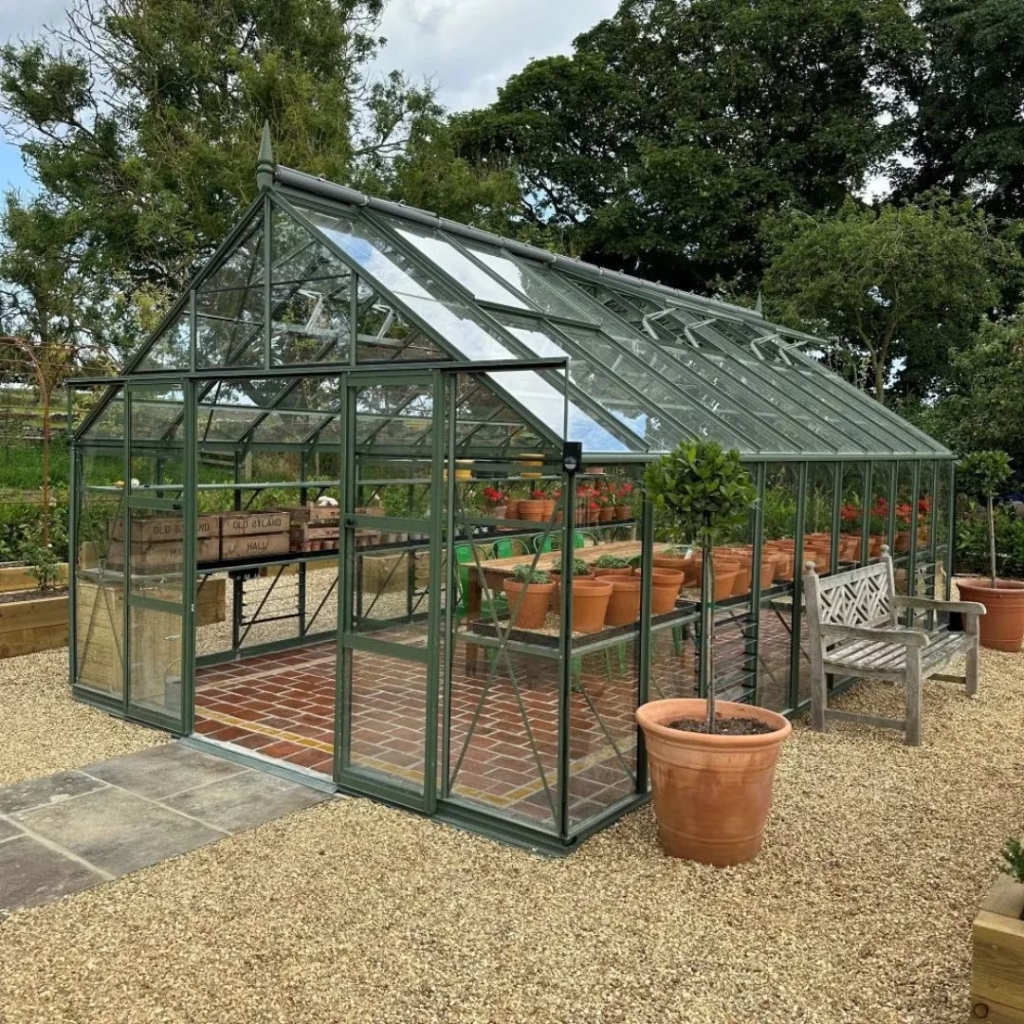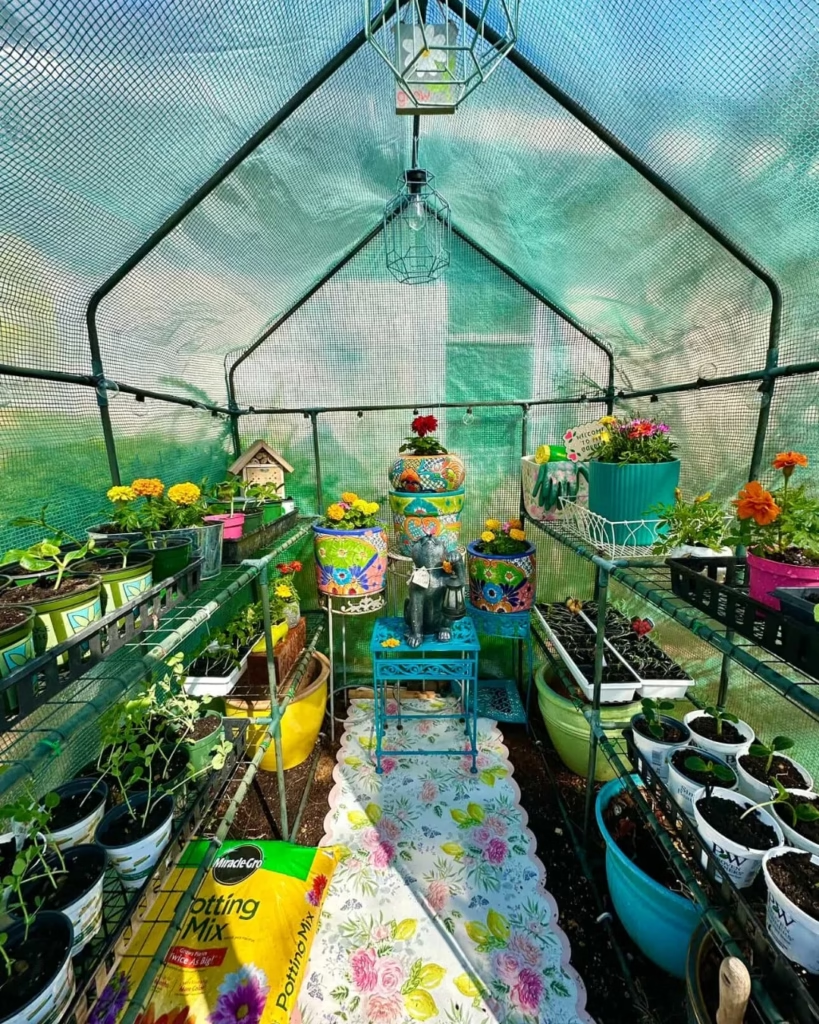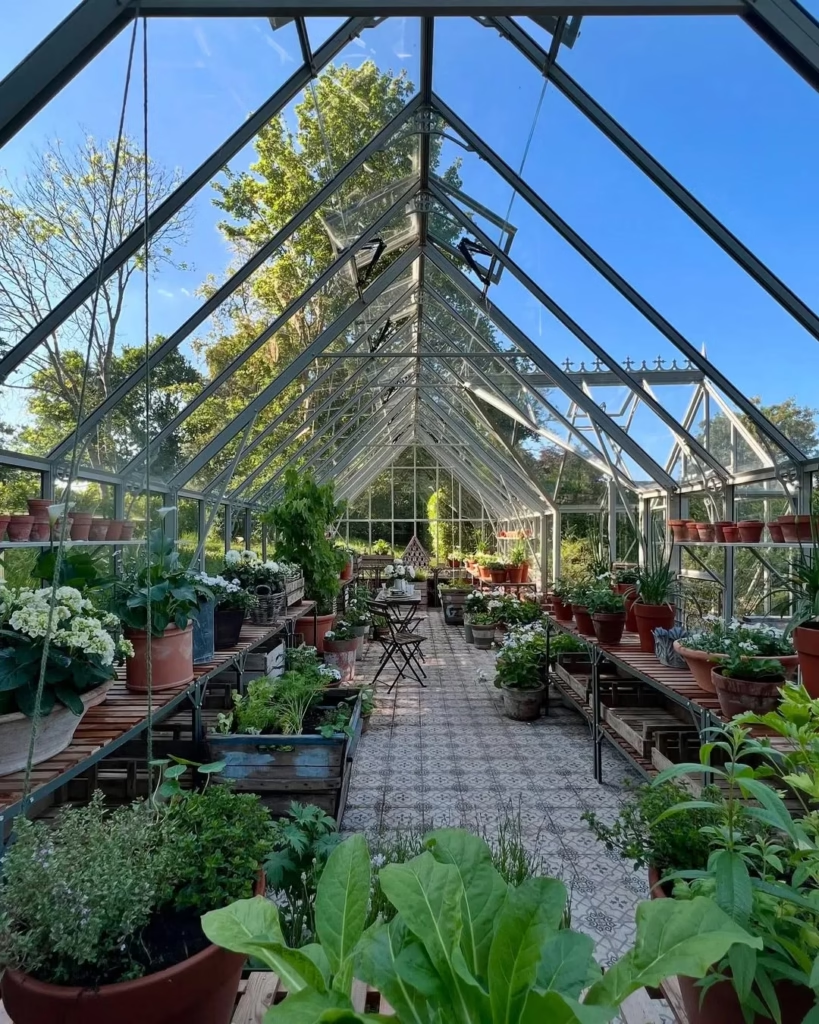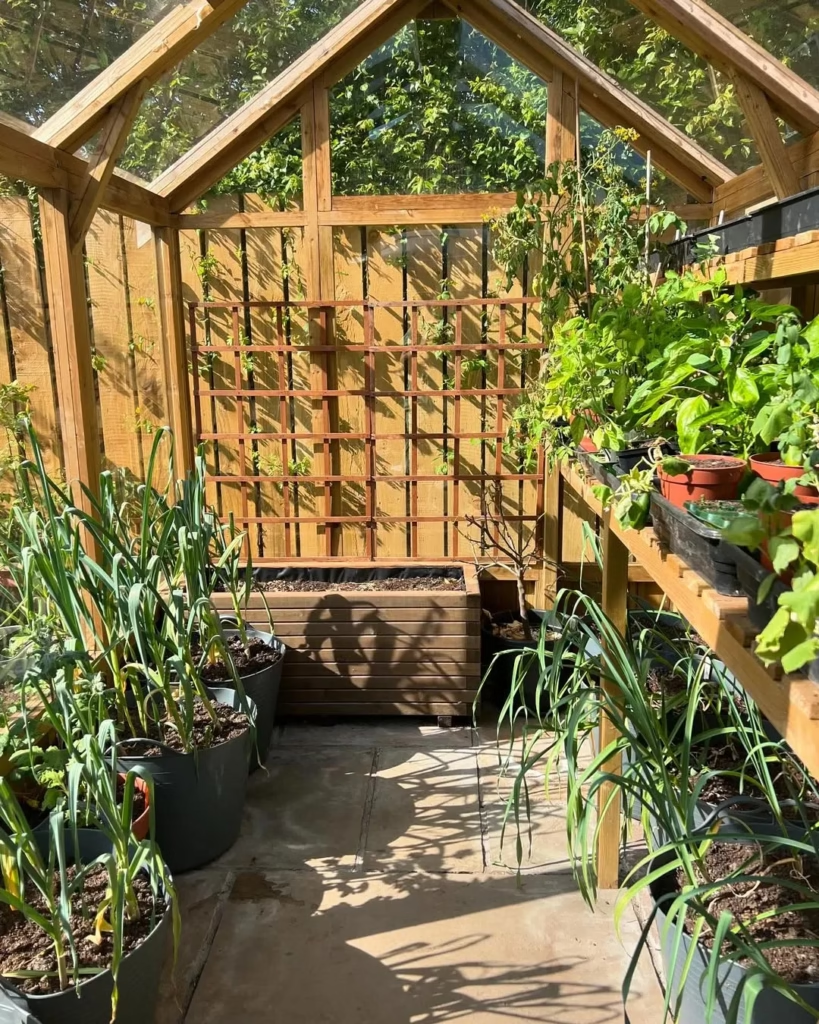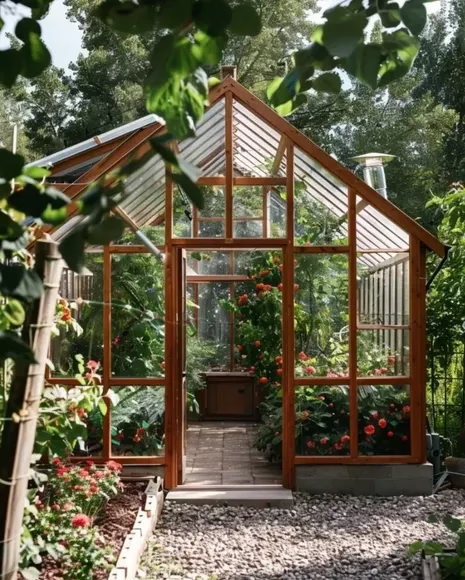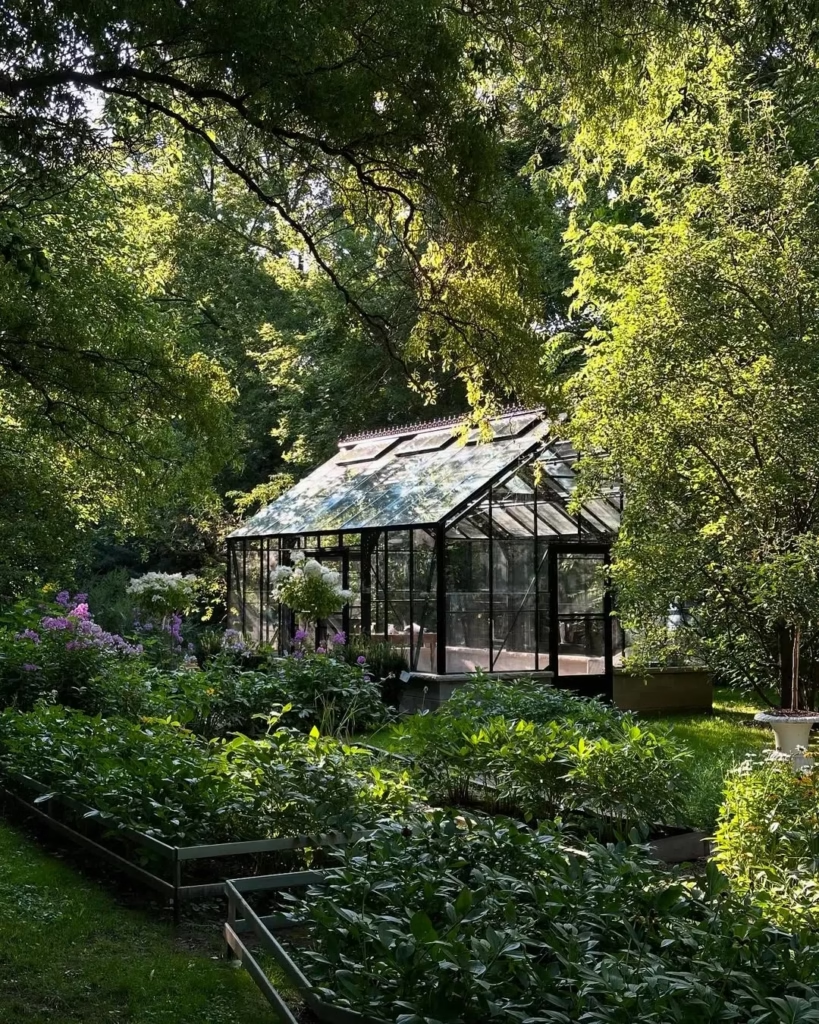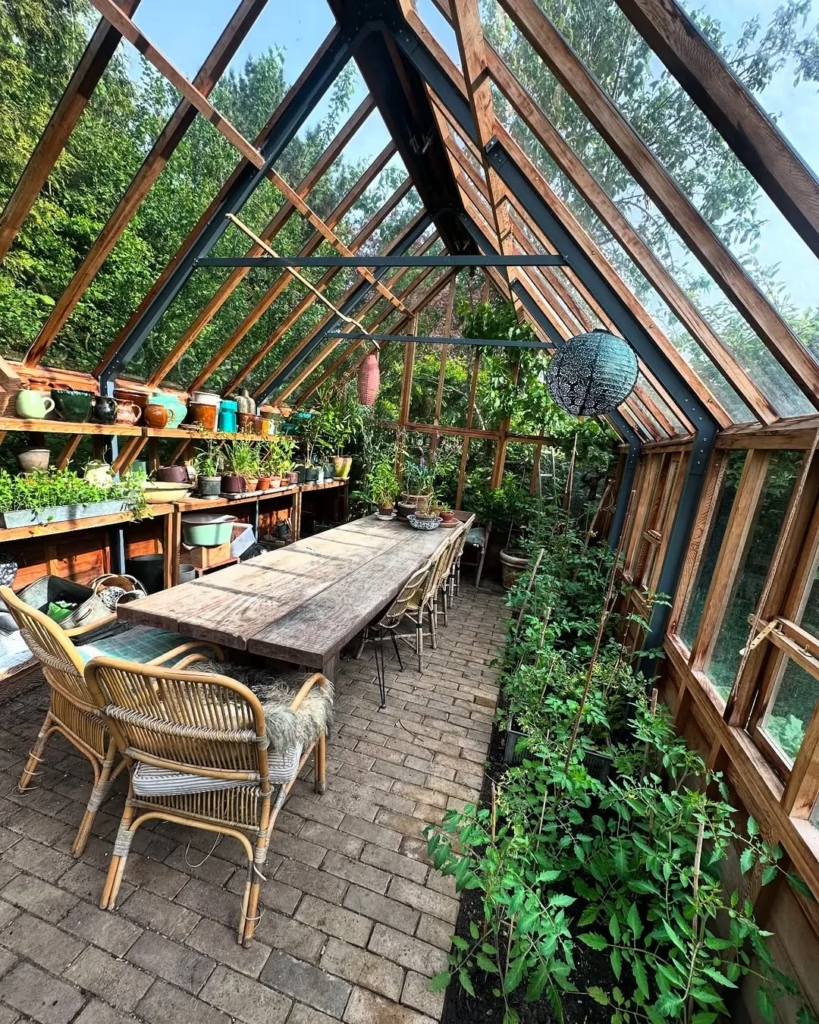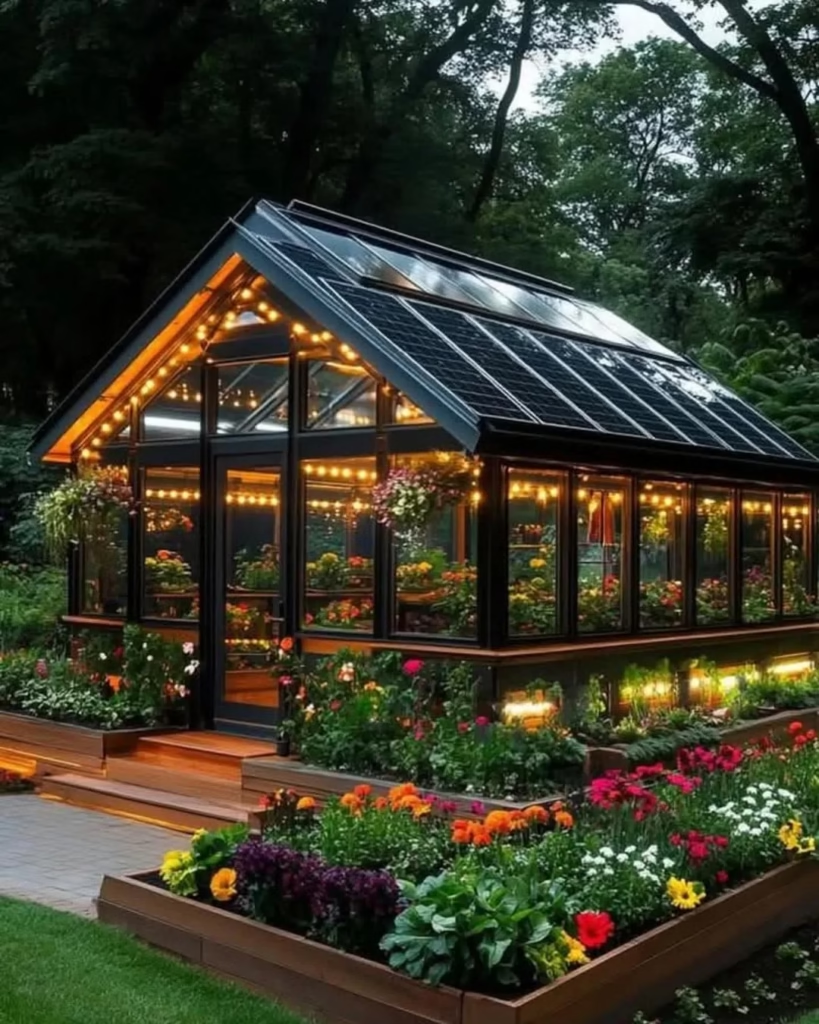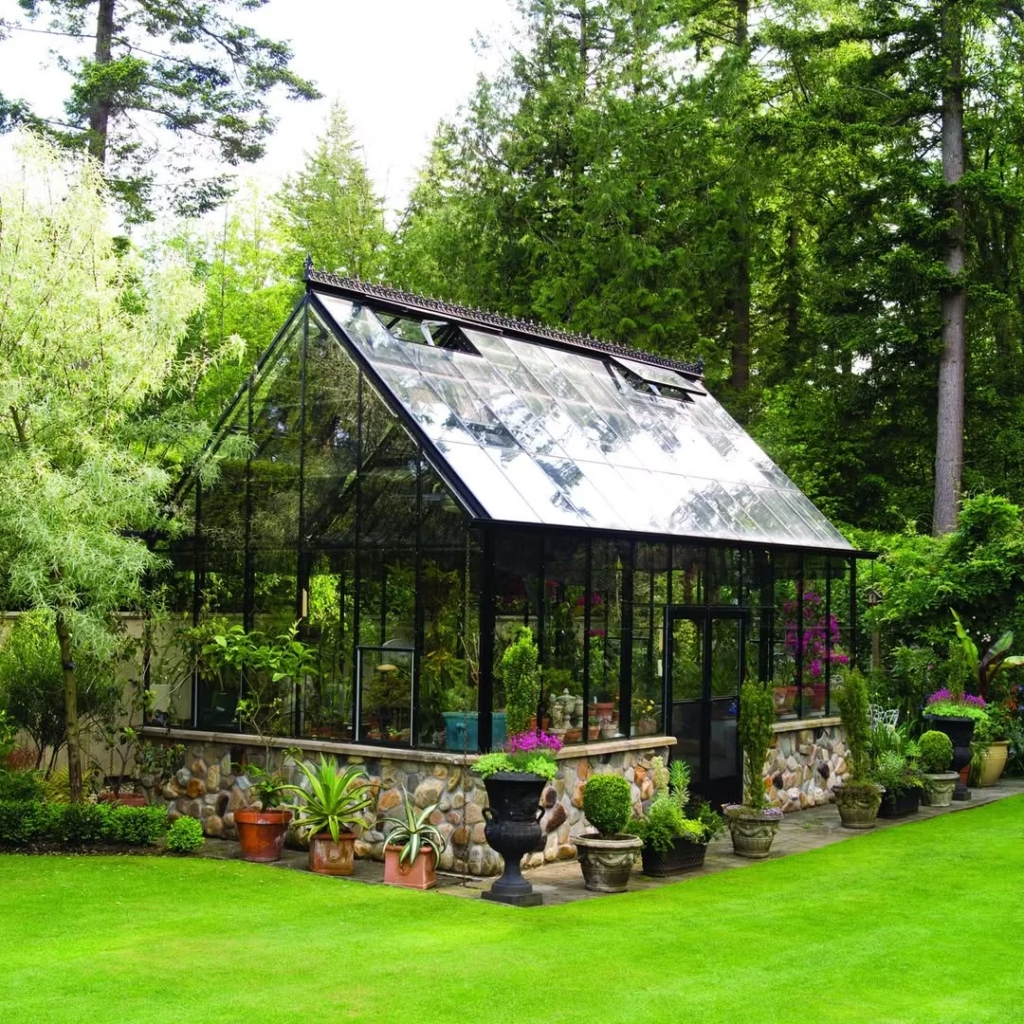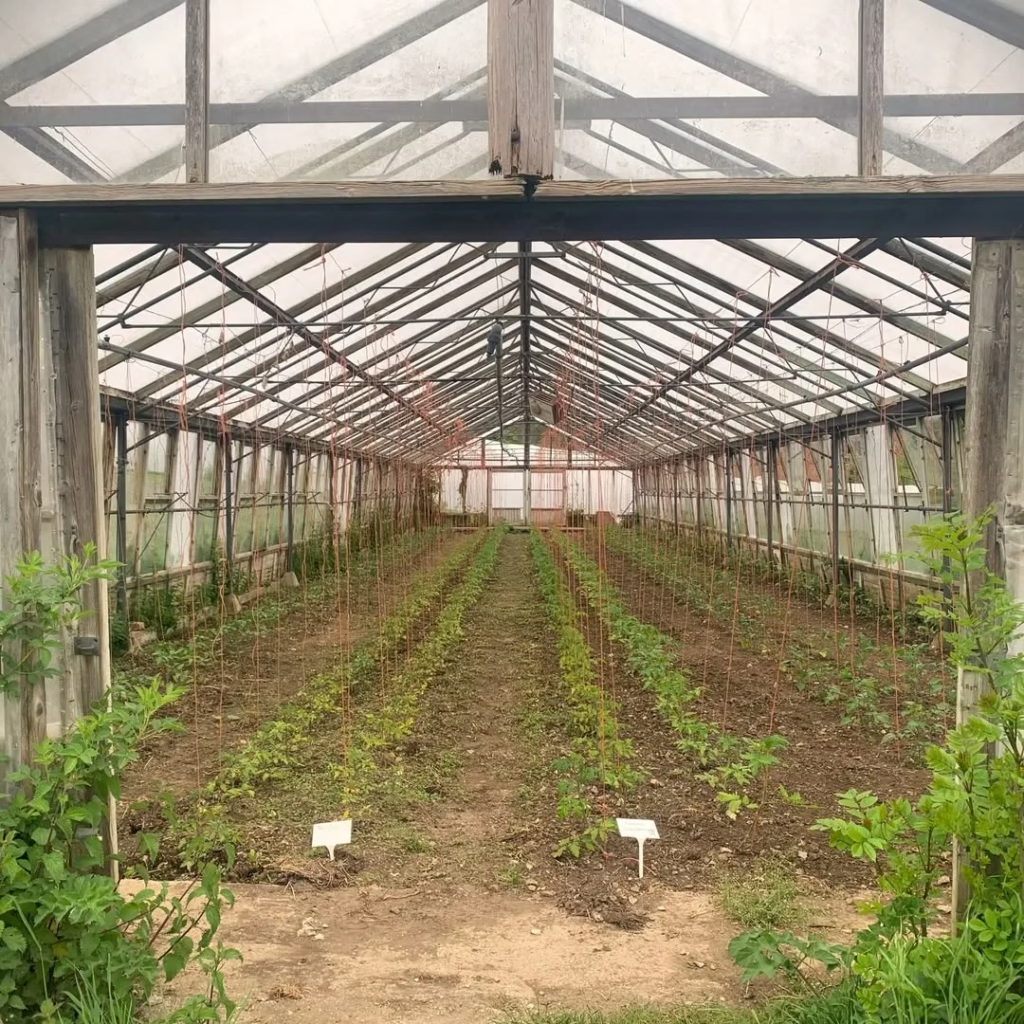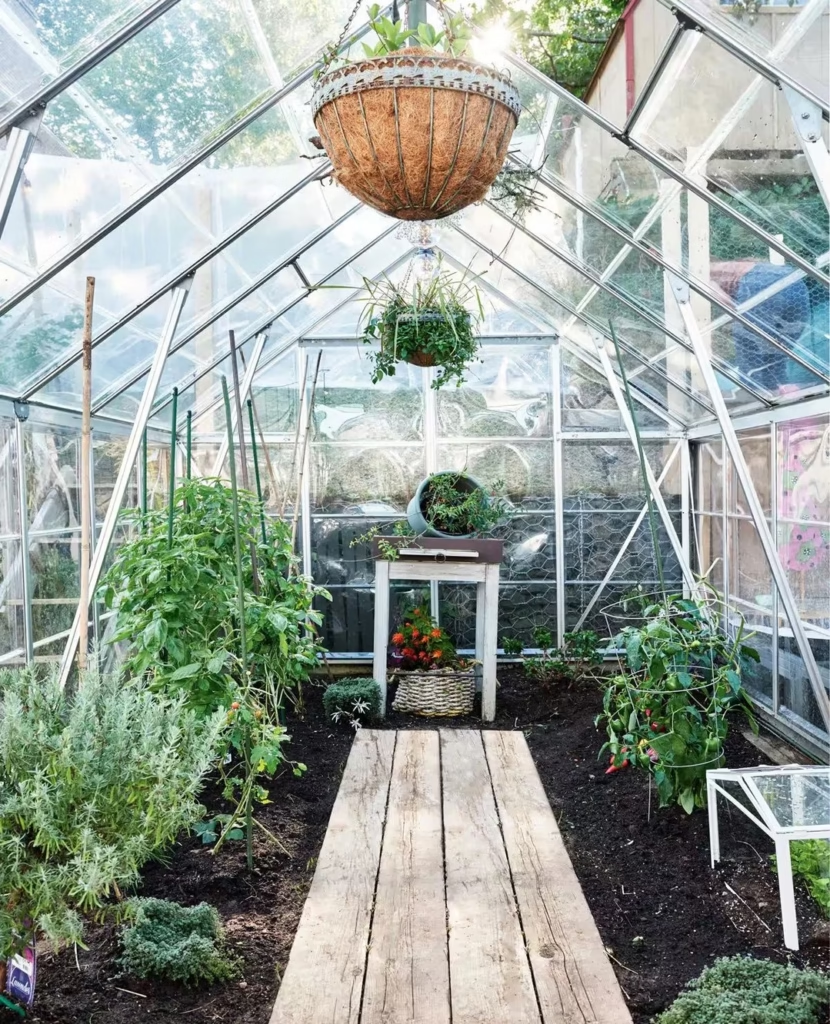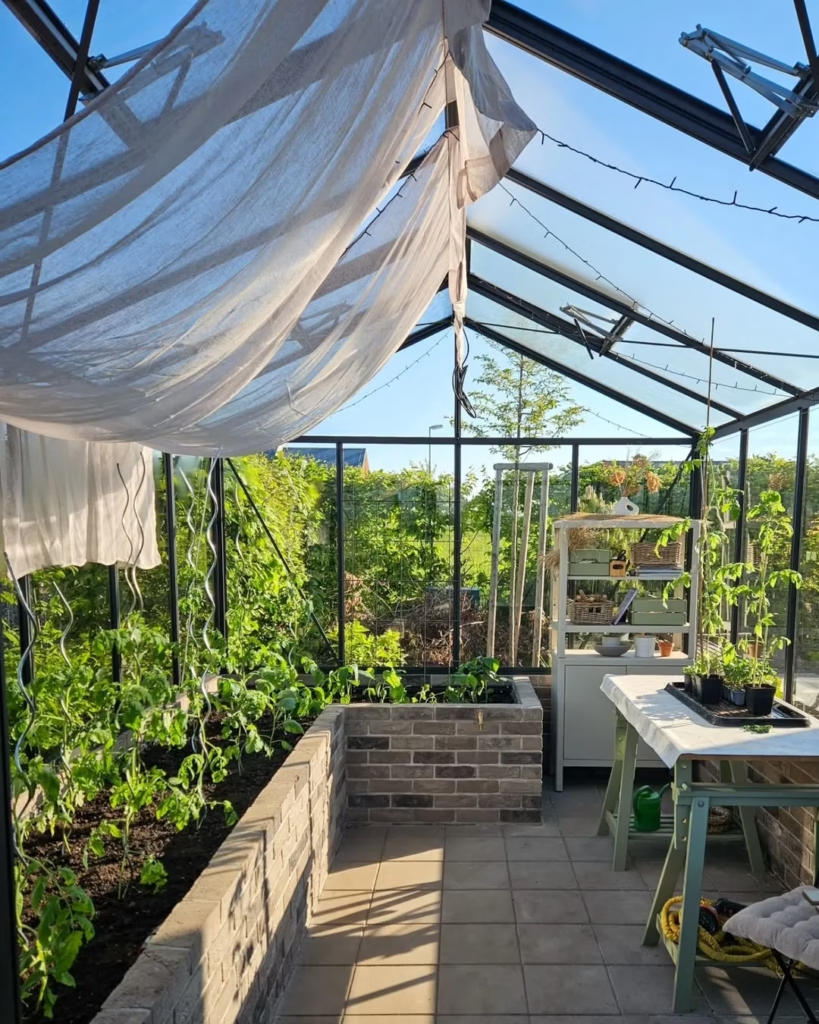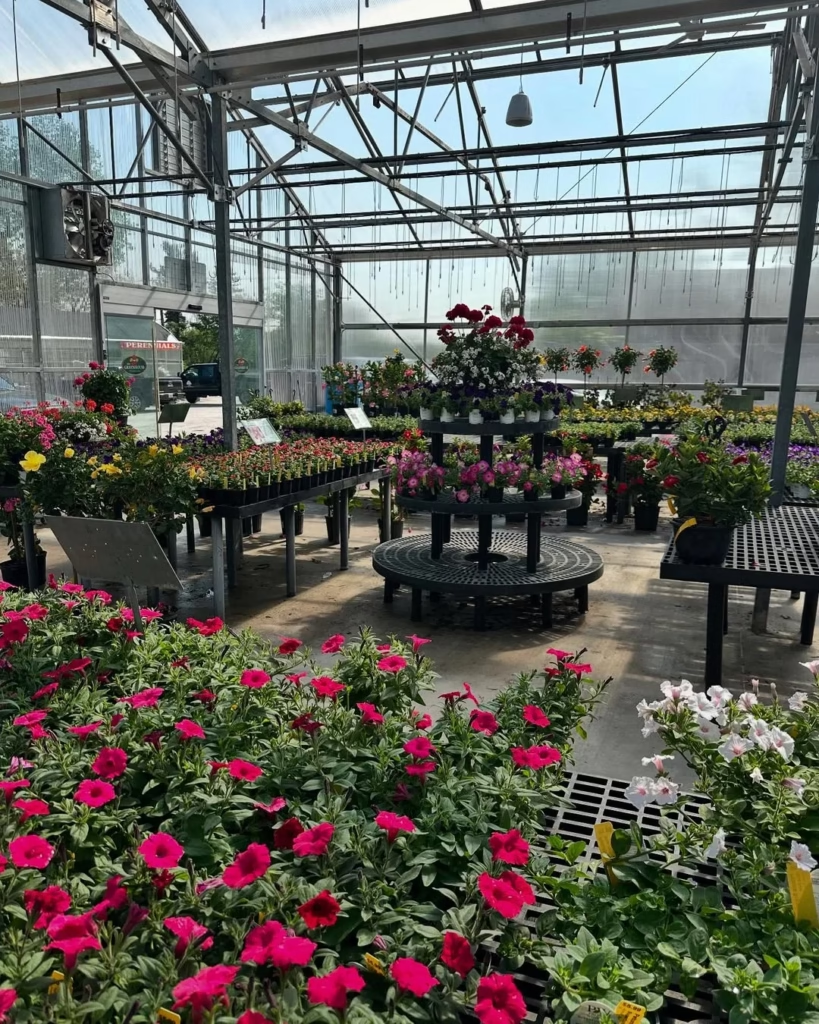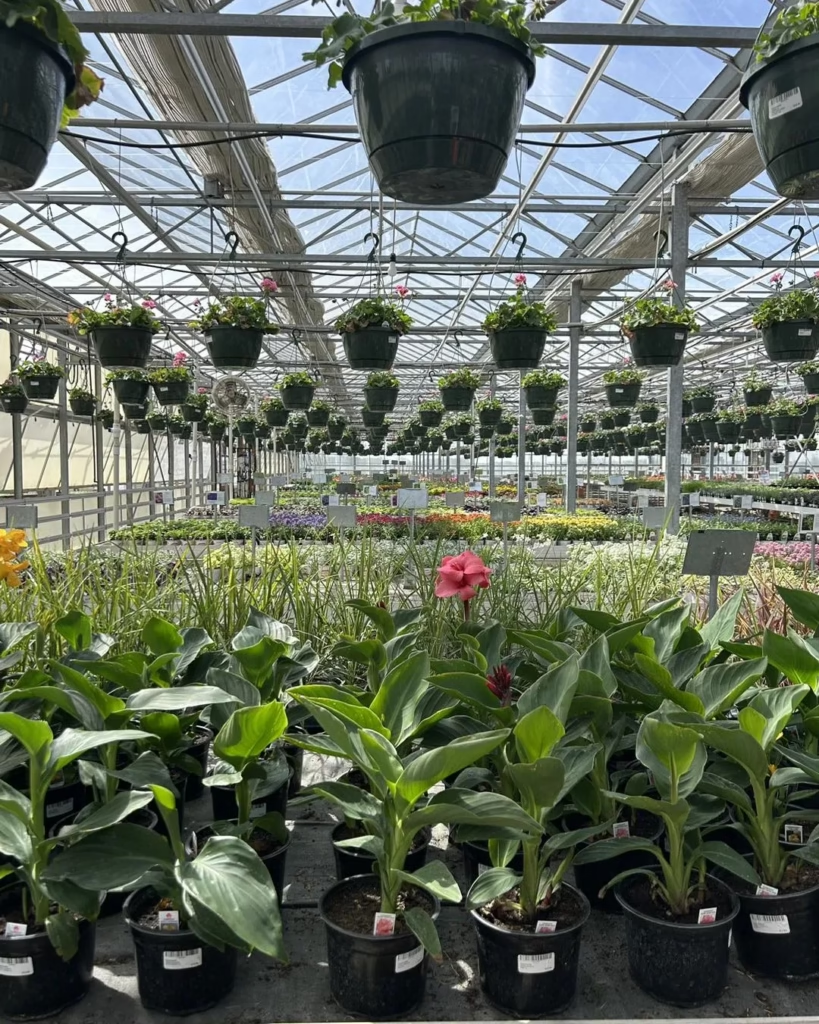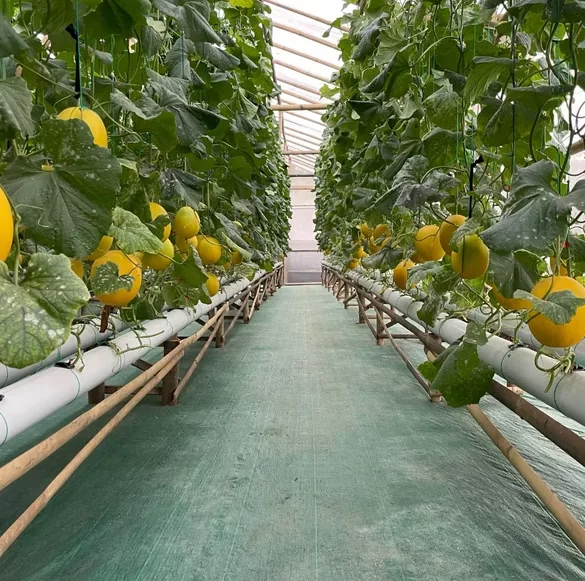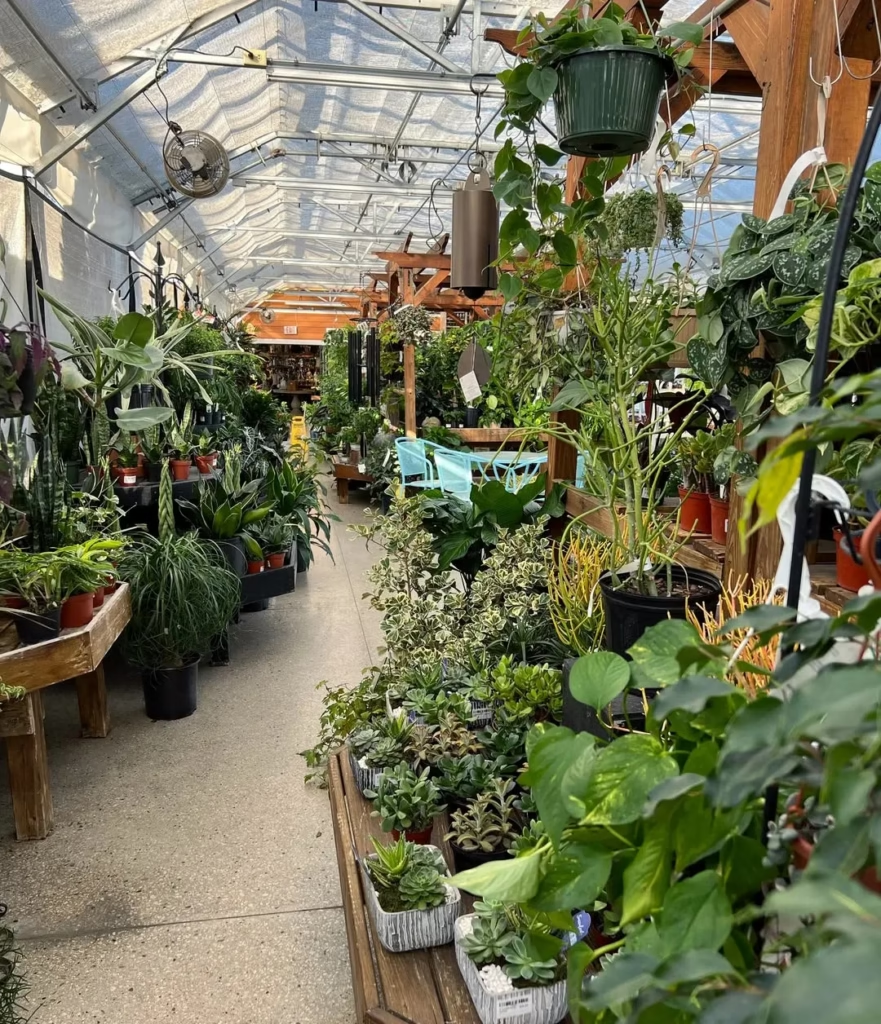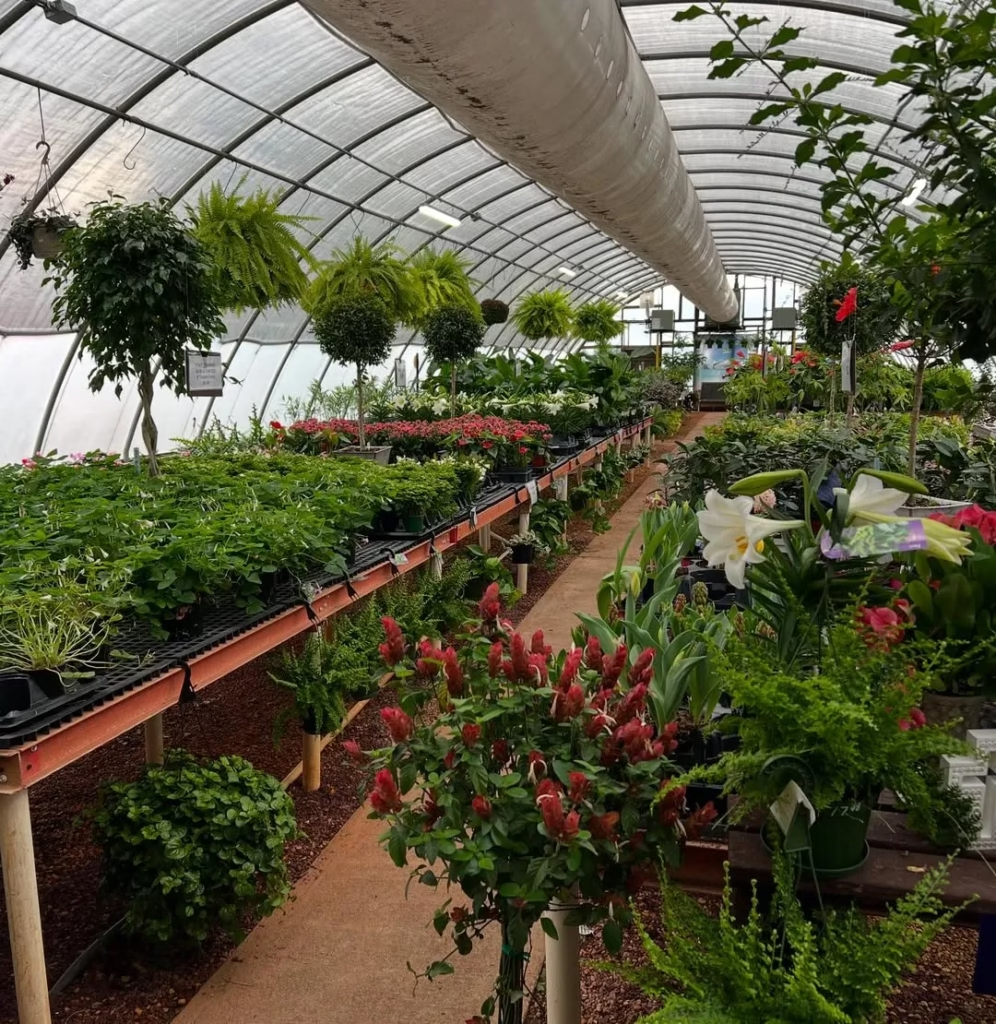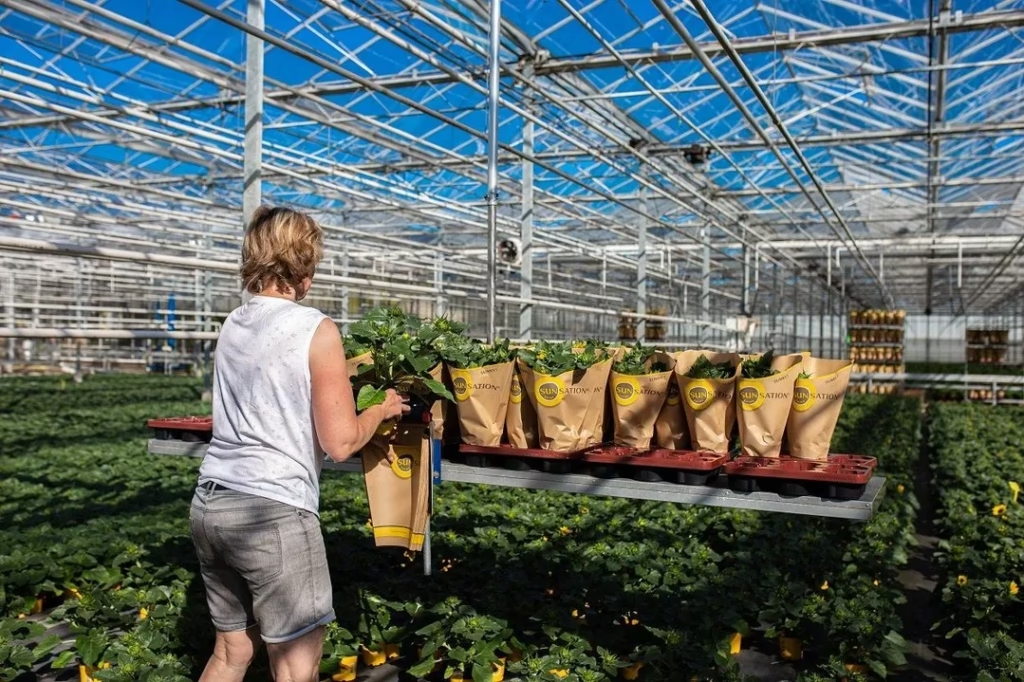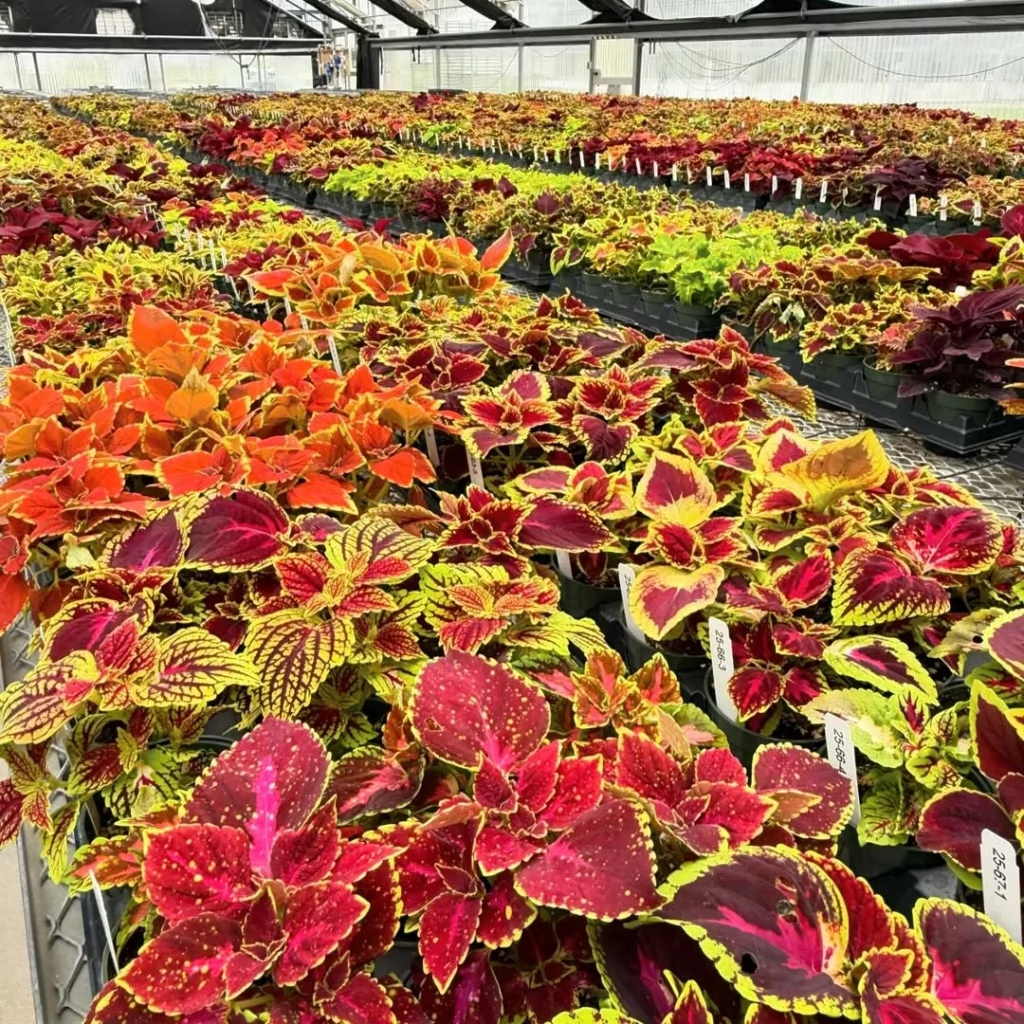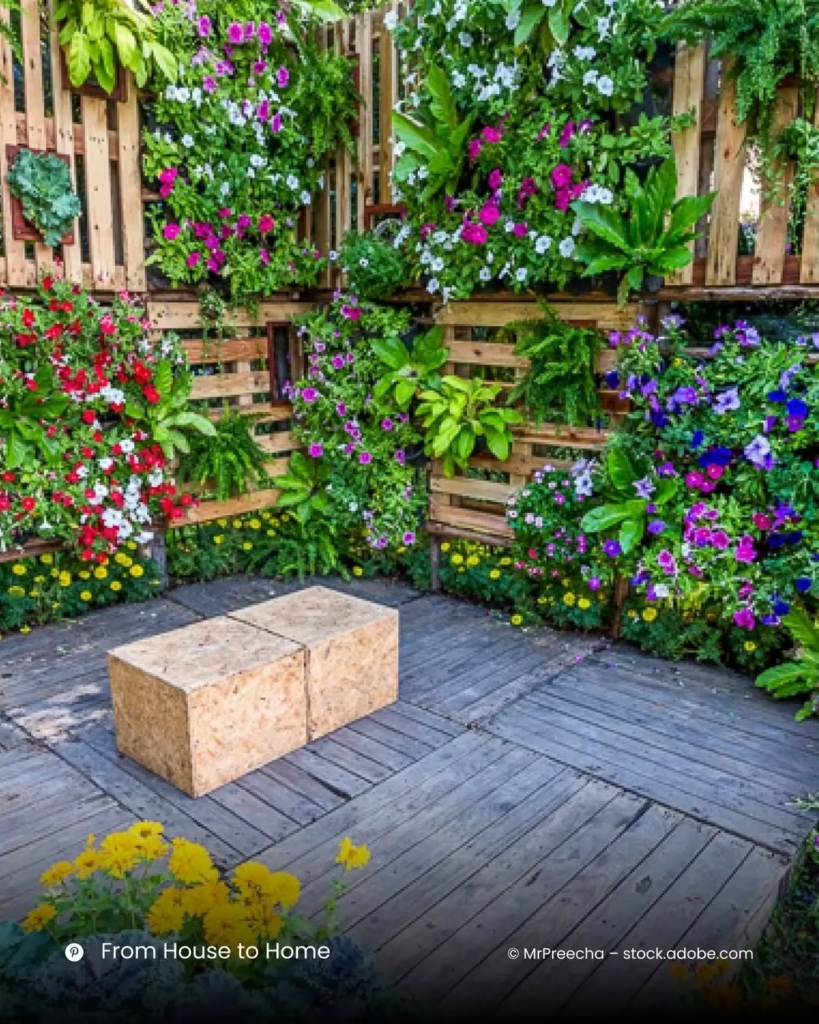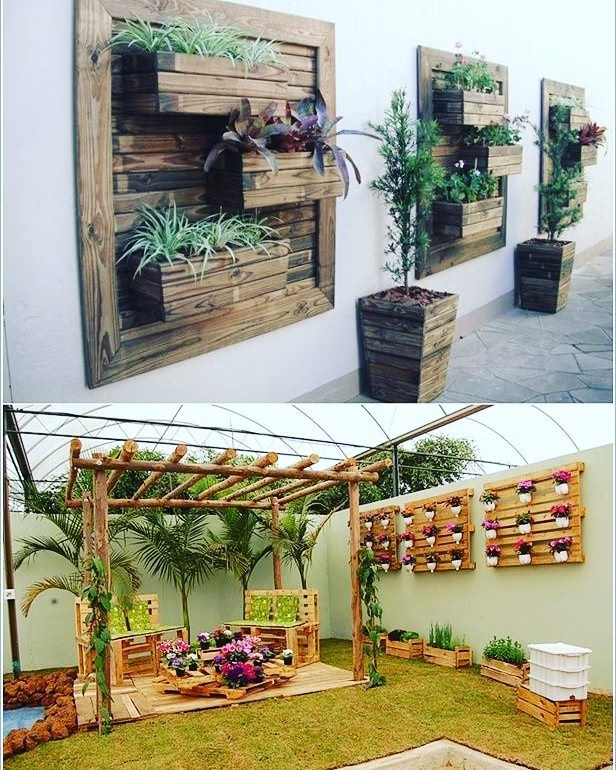Designing an effective and visually attractive greenhouse is essential for any gardening aficionado. One of the most effective methods to optimize space is by integrating innovative shelf concepts that not only enhance your storage capabilities but also improve the visual appeal of your greenhouse.
Begin by making use of vertical space; tall shelving units can assist you in organizing plants and supplies without occupying excessive floor area. Think about employing tiered shelves that enable you to showcase a variety of plants at varying heights. This approach not only facilitates easier access to your plants but also produces a breathtaking visual impact.
Another excellent alternative is to install wall-mounted shelves. These are ideal for smaller greenhouses where every square inch is valuable. They offer sufficient space for pots, tools, and decorative elements while keeping the floor unobstructed for movement.Repurposed materials can also contribute charm and practicality. Old wooden crates or even pallets can be converted into rustic shelves that impart unique character to your greenhouse. Furthermore, adding hanging shelves or planters can further liberate space on your surfaces, allowing for an even broader assortment of plants.Finally, consider utilizing transparent containers on your shelves to organize smaller items such as seeds and gardening tools. This keeps everything orderly and visible, enhancing your gardening experience. By adopting these inventive greenhouse shelf ideas, you will not only optimize your space but also cultivate a welcoming environment for your plants to flourish!
Greenhouse Garden
A greenhouse garden serves as an excellent means to foster a flourishing ecosystem, creating an optimal setting for plants to thrive throughout the year. With its regulated climate, a greenhouse enables gardeners to prolong their growing season beyond the conventional outdoor constraints. Consequently, you can savor fresh vegetables, herbs, and flowers even during the colder months.One of the primary advantages of a greenhouse garden is the capacity to control temperature and humidity levels. By employing heating systems, fans, and ventilation, you can establish ideal conditions for a variety of plant species. This managed environment aids in the prevention of pests and diseases, allowing your plants to grow more robustly and yield greater harvests.In a greenhouse garden, you have the opportunity to explore different growing techniques, such as hydroponics or aquaponics, which utilize water and nutrient solutions in place of soil. These approaches can result in accelerated growth rates and more effective use of space. Furthermore, the capability to initiate seed growth indoors provides you with an advantage, ensuring that your plants are prepared for transplanting at the appropriate time.Additionally, a greenhouse garden can serve as a tranquil retreat, providing a space for relaxation and contemplation amidst the splendor of nature. With thoughtful design and layout, it can evolve into an appealing centerpiece in your yard. By integrating a variety of plants, decorative features, and even seating arrangements, your greenhouse can transform into a lively sanctuary that nurtures both your plants and your enthusiasm for gardening.
flower gardening
Flower gardening is a pleasurable activity that infuses color, fragrance, and vitality into any outdoor area. Regardless of whether you possess a vast backyard or a compact balcony, nurturing a flower garden can convert your surroundings into a tranquil haven. The pleasure derived from flower gardening is not solely attributed to the aesthetic appeal of the blossoms but also to the therapeutic advantages it provides. Interacting with nature through the processes of planting, tending to, and nurturing flowers can reduce stress and enhance mental health.When embarking on the journey of establishing a flower garden, it is crucial to take into account elements such as climate, soil composition, and the availability of sunlight. Selecting the appropriate flowers for your local conditions guarantees that your garden flourishes. Perennials, including daisies and peonies, return annually, contributing a sense of continuity and stability, while annuals like marigolds and petunias offer vibrant splashes of color throughout the growing season.A thoughtfully designed flower garden can also draw in beneficial pollinators, such as bees and butterflies, which are vital for the health of the ecosystem. By incorporating a diverse array of flowering plants, you ensure that there is always something in bloom, providing visual appeal from spring to fall.Moreover, flower gardening presents an opportunity for creativity and personal expression. You can craft your garden in various styles, ranging from formal designs to charming cottage gardens. With careful planning and consistent maintenance, your flower garden can evolve into a breathtaking showcase of nature’s splendor, serving as a serene retreat and a source of pride for any gardener. Embrace the creativity inherent in flower gardening and relish the benefits it offers!
Terracotta Pots Garden
A garden featuring terracotta pots is an enchanting and adaptable method to display your plants while introducing a rustic charm to your indoor or outdoor environment.Known for their warm, earthy hues, terracotta pots offer an inviting appearance that enhances various gardening styles. Crafted from natural clay, these pots ensure excellent breathability and drainage, which are crucial for promoting healthy plant growth.One significant benefit of utilizing terracotta pots is their capacity to manage moisture levels effectively. The porous quality of the clay aids in drawing excess water away from the soil, thus preventing root rot and guaranteeing that your plants obtain the appropriate moisture. This characteristic makes terracotta pots especially suitable for plants that flourish in arid conditions, such as succulents and cacti.A terracotta pots garden can be arranged in countless configurations, from clusters of pots in varying sizes to tiered setups that attract the eye upwards. Additionally, you can paint or embellish terracotta pots to reflect your personality and enhance the visual appeal of your garden. Arranging pots with complementary plants, such as vibrant flowers paired with lush greenery, can create striking focal points.Moreover, terracotta pots are perfect for both outdoor and indoor environments, enabling you to incorporate the beauty of nature into your home. With appropriate maintenance, these pots can endure for many years, becoming a treasured aspect of your gardening experience. Embrace the elegance and practicality of a terracotta pots garden, and relish the joyful experience of nurturing your plants in these classic containers.
Garlic Plants Garden
Cultivating a garden of garlic plants is a fulfilling pursuit that not only elevates your culinary dishes but also offers a pleasurable gardening experience.Garlic, celebrated for its strong flavor and various health advantages, is relatively simple to cultivate, making it a perfect option for both beginner and experienced gardeners.The process of planting garlic is particularly enjoyable as it demands minimal upkeep while yielding impressive results.To initiate a garlic garden, choose high-quality garlic bulbs from a trusted supplier. It is advisable to plant garlic cloves in the fall, approximately 4-6 weeks prior to the first frost, or in early spring, depending on your local climate.Garlic flourishes in well-drained soil that is enriched with organic matter, so preparing your garden bed with compost will promote optimal growth.Position the cloves about 6 inches apart, ensuring the pointed end is facing upwards, to facilitate healthy sprouting.One of the distinctive features of growing garlic is the excitement surrounding its harvest. As the plants develop, they generate green shoots that can be utilized in cooking, imparting a subtle garlic flavor to various dishes.The bulbs are generally ready for harvest in mid to late summer when the lower leaves start to yellow. Following the harvest, proper curing is crucial to prolong the shelf life of your garlic.A garden of garlic plants not only offers a fresh supply of this flavorful ingredient but also aids in pest control within your garden due to its natural repellent qualities.Embrace the journey of growing garlic, and take pleasure in the fulfillment of incorporating homegrown produce into your meals, thereby enhancing both flavor and nutrition in your kitchen!
Red Flower Greenhouse Garden
A greenhouse garden filled with red flowers is a captivating and vibrant means of showcasing creativity while nurturing some of nature’s most remarkable blooms.Red flowers, which symbolize passion and energy, have the ability to transform a greenhouse into an enchanting sanctuary brimming with warmth and beauty.Thanks to the controlled environment of a greenhouse, gardeners can cultivate a diverse array of red-flowering plants throughout the year, irrespective of external weather conditions.Among the popular selections for a red flower greenhouse are exquisite varieties such as geraniums, roses, and hibiscus.Geraniums, characterized by their cheerful clusters, are simple to maintain and yield continuous blooms during the growing season.Roses, celebrated for their timeless elegance, flourish in a greenhouse environment, providing ideal conditions to nurture their delicate petals.Hibiscus, with its large, tropical flowers, introduces an exotic flair, contributing to a lush ambiance.The greenhouse setting not only shields these vibrant flowers from pests and severe weather but also facilitates optimal care regarding humidity and temperature regulation.By arranging red flowers with varying heights and textures, you can create a visually dynamic environment that captures attention and encourages exploration.Furthermore, adding complementary plants, such as lush greens or contrasting colors, can elevate the overall aesthetic of your greenhouse garden.A red flower greenhouse garden presents a distinctive opportunity to honor the beauty of nature while offering a tranquil retreat for relaxation and inspiration.With meticulous planning and care, your greenhouse can evolve into a breathtaking showcase of red blooms that invigorate both your surroundings and your spirit.
Peony Greenhouse Garden
A peony greenhouse garden provides an excellent opportunity to grow these beautiful flowers in a controlled setting, enabling their vibrant colors and lush blooms to thrive year-round.Peonies, celebrated for their large, fragrant flowers and rich heritage, are highly valued by gardeners for their beauty and durability. Within a greenhouse environment, one can establish ideal conditions to cultivate peonies, ensuring they flourish and yield a plentiful array of blossoms.To initiate a peony greenhouse garden, select from various types of peonies, such as herbaceous, tree, and intersectional varieties. Each type possesses distinct traits and colors, ranging from soft pastels to striking, vivid shades. It is essential to plant peonies in well-draining soil that is enriched with organic matter, as these plants favor fertile environments. With appropriate care, peonies can bloom from late spring to early summer, offering a breathtaking display that can endure for several weeks.The greenhouse setting shields peonies from severe weather, pests, and diseases, facilitating optimal growth. Furthermore, regulating humidity and temperature is vital to maintain the health and vibrancy of the plants. Adding companion plants, such as ferns or hostas, can enhance the aesthetic appeal of your peony garden, creating a lush backdrop for the stunning blooms.A peony greenhouse garden not only presents a variety of beautiful flowers but also acts as a serene retreat, where one can relish the sights and fragrances of nature. By diligently caring for your peonies, you can cultivate a thriving sanctuary that honors the grace and allure of these cherished blooms, transforming every day into a special occasion.
Tomatoes Greenhouse Garden
A greenhouse garden for tomatoes is an outstanding method to cultivate this cherished fruit in a controlled setting that optimizes both yield and flavor.Tomatoes flourish in warm environments, making a greenhouse an ideal location to maintain the perfect temperature and humidity levels for their growth. With meticulous planning and care, you can reap a plentiful harvest of succulent, ripe tomatoes throughout the growing season.To initiate your tomatoes greenhouse garden, choose varieties that align with your preferences and local climate, such as cherry, beefsteak, or heirloom tomatoes. Each variety presents distinct flavors and textures, enabling you to diversify your harvest.Plant tomatoes in well-draining soil that is enriched with organic matter to ensure they receive vital nutrients. Providing support through staking or caging your plants will help keep the fruit elevated off the ground, thereby minimizing the risk of disease.The greenhouse environment shields tomatoes from harsh weather, pests, and diseases, resulting in a healthier and more fruitful crop. Additionally, you can regulate factors like watering and fertilization, which are essential for cultivating robust, flavorful tomatoes. Regularly checking humidity levels can help avert problems such as blossom end rot and fungal infections.Integrating companion plants, such as basil or marigolds, can further improve your tomatoes greenhouse garden by attracting beneficial insects and repelling pests. A tomatoes greenhouse garden not only produces delectable fruits but also provides a pleasurable and fulfilling gardening experience. By caring for your plants with diligence, you can enjoy the satisfaction of growing your own fresh tomatoes, enhancing your meals with homegrown quality.
Color Flower Design Garden
A garden designed with colorful flowers is a vibrant tribute to nature, infusing joy and beauty into any outdoor area. By carefully arranging a diverse selection of flowering plants in a harmonious array of colors, one can craft a stunning visual masterpiece that enchants the senses. The essence of creating a successful color flower garden lies in choosing the appropriate combination of flowers that complement one another, while also taking into account factors such as blooming periods, height, and texture.Begin by selecting a color scheme that mirrors your personal taste and the ambiance you wish to express. For a bright and cheerful environment, consider incorporating vivid, bold hues like reds, yellows, and oranges. Conversely, a garden adorned with gentle pastels such as pinks, blues, and whites can evoke feelings of peace and calm. Blending colors can result in a dynamic and captivating display, whereas a monochromatic palette can offer a sophisticated and unified appearance.Integrating plants of varying heights and forms introduces depth and dimension to your garden. Taller blooms, such as sunflowers or delphiniums, can act as focal points, while shorter species, like pansies and daisies, can occupy the foreground. Furthermore, adding foliage plants with distinctive textures and colors can elevate the overall design.A color flower design garden not only enhances your landscape but also draws in pollinators such as bees and butterflies, fostering a thriving ecosystem. By dedicating time and creativity to your garden design, you can cultivate a breathtaking floral display that brings joy throughout the seasons, transforming your garden into a true sanctuary of color and life.
Nature House Garden
A nature house garden represents a harmonious integration of flora and fauna, creating a serene and welcoming environment that honors the splendor of the natural world. This garden type is specifically designed to promote biodiversity, attracting a variety of wildlife, including birds, butterflies, and beneficial insects, while offering a tranquil retreat for the gardener. By utilizing native plants and sustainable gardening methods, a nature house garden not only beautifies your home but also bolsters the local ecosystem.To establish a nature house garden, begin by choosing a selection of native plants that flourish in your area. Native species are well-suited to the local soil and climate, requiring less maintenance and water compared to non-native varieties. A combination of perennials, annuals, and shrubs guarantees year-round visual interest and provides habitats for wildlife. Incorporating elements such as birdhouses, butterfly gardens, and water features like ponds or birdbaths can significantly enhance the ecological benefits of your garden.Think about creating distinct areas within your nature house garden, such as a wildflower meadow, a shaded woodland section, or a sunny herb patch. These varied environments not only support a diverse array of species but also present unique opportunities for exploration and enjoyment.A nature house garden can act as a refuge for relaxation, creativity, and a deeper connection with the earth. By nurturing this living space, you foster an appreciation for the natural world, promoting a sense of peace and well-being. Embrace the beauty and simplicity of a nature house garden, and relish the fulfilling experience of coexisting with nature right outside your door. Pallet Garden Wall Ideas: 10 DIY Projects to Try
Vegetable Garden
A vegetable garden is a gratifying and satisfying pursuit that enables you to cultivate your own fresh produce right at home. It not only grants access to healthy vegetables but also fosters sustainability and a stronger connection to the food you eat. With thoughtful planning and attention, you can convert your outdoor area into a flourishing vegetable garden that produces a generous harvest.To initiate your vegetable garden, choose a site that receives a minimum of six hours of sunlight each day and has well-drained soil. Start by selecting vegetables that you and your family enjoy, such as tomatoes, peppers, cucumbers, or leafy greens. Take into account the growing season and climate in your region, as these factors will affect which crops will prosper.Employing raised beds or containers can help optimize space, particularly in smaller gardens. These approaches enhance drainage and facilitate better control over soil quality. Regularly enrich your soil with organic matter, such as compost, to guarantee that your vegetables receive the essential nutrients for robust growth.
Adopting companion planting strategies can boost productivity and deter pests, fostering a more sustainable garden ecosystem. For example, planting marigolds alongside vegetables can assist in repelling harmful insects.A vegetable garden not only supplies fresh ingredients for your meals but also provides physical activity, mental relaxation, and a sense of achievement. By caring for your plants and observing their growth, you develop a deeper appreciation for nature and the food system. Embrace the pleasure of vegetable gardening, and relish the delightful rewards of your efforts throughout the seasons!
Planting Garden
A planting garden is a lively area that encourages the growth of a variety of plants, offering beauty, sustenance, and a bond with nature.Whether you are growing flowers, vegetables, or herbs, a thoughtfully designed planting garden can improve your outdoor space and provide a fulfilling gardening experience.The process starts with meticulous planning and preparation, ensuring that your garden flourishes in its distinct environment.When initiating a planting garden, it is vital to evaluate your available space, sunlight exposure, and soil quality.Different plants have particular needs, so choosing the appropriate location is essential for their prosperity.For instance, most vegetables need full sunlight, whereas some shade-tolerant plants, such as ferns or hostas, thrive in lower light conditions.After selecting your plants, think about arranging them according to height, color, and blooming period to achieve a visually attractive and cohesive design.Grouping plants with similar water and nutrient requirements can simplify your maintenance tasks, making it more manageable to tend to your garden.Incorporating native plants is an excellent method to support local wildlife, attract pollinators, and enhance biodiversity.Moreover, employing companion planting strategies can boost growth and naturally repel pests, fostering a healthier garden ecosystem.A planting garden provides numerous advantages, including access to fresh produce, visual appeal, and a tranquil space for relaxation and contemplation.By nurturing your plants and watching their development, you cultivate patience and a deeper appreciation for the natural world.Embrace the pleasures of gardening, and allow your planting garden to transform into a sanctuary that enriches both your life and your surroundings.
Sklinic Green House
A planting garden is a lively area that encourages the growth of a variety of plants, offering beauty, sustenance, and a bond with nature.Whether you are growing flowers, vegetables, or herbs, a thoughtfully designed planting garden can improve your outdoor space and provide a fulfilling gardening experience.The process starts with meticulous planning and preparation, ensuring that your garden flourishes in its distinct environment.When initiating a planting garden, it is vital to evaluate your available space, sunlight exposure, and soil quality.Different plants have particular needs, so choosing the appropriate location is essential for their prosperity.For instance, most vegetables need full sunlight, whereas some shade-tolerant plants, such as ferns or hostas, thrive in lower light conditions.After selecting your plants, think about arranging them according to height, color, and blooming period to achieve a visually attractive and cohesive design.Grouping plants with similar water and nutrient requirements can simplify your maintenance tasks, making it more manageable to tend to your garden.Incorporating native plants is an excellent method to support local wildlife, attract pollinators, and enhance biodiversity.Moreover, employing companion planting strategies can boost growth and naturally repel pests, fostering a healthier garden ecosystem.A planting garden provides numerous advantages, including access to fresh produce, visual appeal, and a tranquil space for relaxation and contemplation.By nurturing your plants and watching their development, you cultivate patience and a deeper appreciation for the natural world.Embrace the pleasures of gardening, and allow your planting garden to transform into a sanctuary that enriches both your life and your surroundings. 10 Pallet Perfection: Garden Wall Ideas
Plants Flower Garden
A flower garden filled with plants is a charming refuge that highlights the beauty and variety of flowering species, establishing a lively and welcoming environment for relaxation and enjoyment. This kind of garden can be crafted to emphasize an array of colors, shapes, and scents, transforming any outdoor space into a breathtaking visual spectacle. With meticulous planning and careful selection, a flower garden can flourish throughout the seasons, offering continuous blooms and a dynamic landscape.When establishing a flower garden, it is crucial to select a combination of annuals and perennials to guarantee ongoing color and interest. Annuals, such as petunias and zinnias, deliver vibrant splashes of color during the growing season, while perennials like daisies and peonies reappear year after year, forming the foundation of your garden. Including plants with diverse heights and textures not only adds dimension but also creates an engaging visual experience.The arrangement of your flower garden can be designed to complement your home and the surrounding landscape. Consider incorporating pathways, borders, or raised beds to delineate areas and establish a sense of structure. Adding features like ornamental grasses or shrubs can enhance the garden’s visual appeal while providing habitats for beneficial insects and wildlife.A flower garden filled with plants serves not only as a stunning focal point but also as a source of joy and inspiration. Spending time among blooming flowers can uplift your spirits and promote mindfulness. By nurturing your plants and observing their growth, you develop a deeper appreciation for nature, making your garden a genuinely rewarding and enriching experience. 10 Garden on a Pallet
Bedding Plants Greenhouse
A greenhouse for bedding plants provides an excellent setting for growing vibrant and colorful annuals and perennials that beautify gardens and landscapes.These greenhouses are specifically constructed to facilitate the growth of bedding plants, which are frequently utilized for seasonal displays, borders, and container gardening.By offering a controlled climate, a bedding plants greenhouse enables gardeners to initiate their plants earlier in the season, ensuring a thriving garden as the weather becomes warmer.Within a bedding plants greenhouse, temperature, humidity, and light levels can be meticulously adjusted to establish optimal growing conditions.This capability allows for the propagation of a diverse range of plants, including popular varieties such as petunias, marigolds, and impatiens.Using seed trays or pots, gardeners can cultivate their bedding plants from seeds or cuttings, nurturing them until they are prepared for outdoor transplanting.One significant advantage of a bedding plants greenhouse is the prolonged growing season it provides.By protecting plants from severe weather conditions, gardeners can sustain healthy growth and vibrant blooms, thereby maximizing the enjoyment and beauty of their outdoor spaces.Moreover, the greenhouse environment aids in minimizing the risk of pests and diseases, fostering healthier plants.Incorporating a bedding plants greenhouse into your gardening practices not only enhances the visual appeal of your landscape but also stimulates creativity in design.By experimenting with various plant combinations, colors, and textures, you can craft stunning displays that infuse life and joy into your outdoor areas.Ultimately, a bedding plants greenhouse serves as an invaluable asset for any gardener aiming to enhance their gardening experience and relish the beauty of blooming plants.
Green House Grown Garden
A greenhouse cultivated garden is an exceptional method for growing a diverse range of plants within a regulated environment, guaranteeing ideal conditions for growth throughout the entire year.
By employing a greenhouse, gardeners can protect their plants from severe weather, pests, and diseases, enabling them to thrive irrespective of the season. This approach not only prolongs the growing season but also improves the quality and quantity of produce, making it a perfect option for both enthusiasts and dedicated gardeners.
In a greenhouse cultivated garden, temperature, humidity, and light levels can be carefully controlled. This allows gardeners to establish the ideal microclimate for different plants, whether they are cultivating vegetables, herbs, or decorative flowers. For instance, tomatoes and peppers flourish in warm conditions, while leafy greens favor cooler temperatures. By adjusting the environment to meet the specific needs of various plants, gardeners can attain greater yields and healthier specimens.One significant benefit of a greenhouse cultivated garden is the capacity to initiate seed planting earlier in the spring and prolong the harvest into the autumn. This not only optimizes productivity but also facilitates a wide variety of crops throughout the year. Furthermore, greenhouse gardening frequently diminishes the necessity for chemical pesticides, as the enclosed environment can assist in keeping harmful insects away.Ultimately, a greenhouse cultivated garden offers a distinctive chance to engage with nature while reaping the rewards of your efforts. By fostering plants in a controlled setting, you develop a deeper appreciation for gardening and the natural environment, transforming your greenhouse into a charming sanctuary of growth and beauty.
Melon Green House Garden
A melon greenhouse garden offers an excellent opportunity to grow various types of melons, including cantaloupes, watermelons, and honeydews, within a controlled environment that promotes their growth and enhances their flavor. Melons flourish in warm temperatures and plentiful sunlight, making a greenhouse an ideal location to provide these optimal conditions throughout the growing season. By taking advantage of greenhouse gardening, melon enthusiasts can reap a generous harvest of sweet, juicy fruits even in areas with shorter growing seasons.When setting up a melon greenhouse garden, it is crucial to choose the appropriate varieties that align with your climate and personal taste preferences. Common selections include the traditional cantaloupe, the refreshing watermelon, and the aromatic honeydew. Melons need sufficient space to develop, so utilizing trellising methods can optimize vertical space while encouraging improved air circulation and sunlight exposure.An important factor in achieving a successful melon greenhouse garden is the maintenance of suitable humidity and temperature levels. Melons generally prefer warm conditions, ideally ranging from 70°F to 90°F (21°C to 32°C), along with consistent watering to prevent stress during their growth phases. Implementing drip irrigation systems can guarantee that the plants receive sufficient moisture without over-saturating the soil.Beyond providing delectable fruits, a melon greenhouse garden creates a welcoming environment filled with the delightful scents of ripening melons. The pleasure of harvesting your own homegrown melons enriches the gardening experience and cultivates a stronger connection to the food you eat. Ultimately, a melon greenhouse garden is a charming and fulfilling endeavor that brings the essence of summer directly into your home.
Tropical Plants Garden
A tropical plants garden serves as a vibrant and exotic haven that highlights the lush beauty and diversity of tropical flora, transforming any outdoor area into a paradise. Defined by bold foliage, vivid colors, and distinctive textures, a tropical garden embodies the essence of a warm climate, even in cooler locales. By thoughtfully selecting a range of tropical plants, gardeners can craft a breathtaking landscape that flourishes with life and vitality.Crucial to the establishment of a thriving tropical plants garden is the comprehension of the specific requirements of these plants. Numerous tropical species, including hibiscus, bird of paradise, and cannas, flourish in warm, humid conditions with well-draining soil. The addition of elements such as organic matter, mulch, and consistent watering can help replicate their natural environment and encourage healthy growth. Furthermore, selecting a site that receives sufficient sunlight is vital for enhancing plant vigor and ensuring vibrant blooms.Incorporating a variety of heights and textures contributes depth and intrigue to the garden. Taller plants can act as focal points, while shorter varieties can provide lush ground cover. The use of colorful flowering plants alongside striking foliage, such as palms and ferns, elevates the overall aesthetic and fosters a sense of tropical abundance.A tropical plants garden also draws a range of wildlife, including butterflies and hummingbirds, enriching the ecosystem and offering opportunities for observation and enjoyment. By immersing oneself in the splendor of a tropical garden, one cultivates a sense of tranquility and connection to nature. Ultimately, a tropical plants garden presents a unique retreat, inviting you to experience the lush, vibrant charm of a tropical paradise right in your own backyard.
Spring Plants Gardening
Gardening with spring plants is a pleasurable and refreshing activity that signifies the onset of warmer weather and the revival of nature.
As the days lengthen and temperatures increase, spring presents an ideal opportunity to grow a diverse range of plants that flourish during this time.
This gardening season instills a feeling of renewal and enthusiasm, as gardeners can finally engage with the soil and observe their hard work come to fruition.During spring, it is crucial to choose plants that thrive in the cooler temperatures characteristic of early growth.
Cool-season crops such as lettuce, spinach, peas, and radishes can be sown as soon as the soil is workable, yielding early harvests that are both tasty and nutritious.Additionally, flowering plants like pansies, tulips, and daffodils can be planted, introducing vibrant colors and fragrant blossoms that enhance the landscape.Effective preparation is vital for successful spring gardening.Enriching the soil with organic matter and compost guarantees that plants obtain the essential nutrients for robust growth.Consistent watering, particularly in the early stages, aids in establishing strong root systems.Moreover, monitoring weather conditions and shielding young plants from unforeseen frosts can protect your garden’s development.Spring gardening not only provides fresh produce and beautiful flowers but also acts as a therapeutic activity, encouraging physical exercise and mental health.Interacting with the earth, sowing seeds, and caring for plants cultivates a stronger bond with nature and fosters a sense of achievement.In conclusion, spring plants gardening is a joyful tribute to life, growth, and the splendor of the natural world reawakening after the winter season.
Sunsation Sunflowers Garden
A Sun Sation sunflowers garden is a lively and joyful area that honors the enchanting allure of these beautiful flowers.Renowned for their bright, golden-yellow petals and tall, robust stems, Sun Sation sunflowers not only infuse any garden with vibrant color but also draw in pollinators such as bees and butterflies, thereby enhancing the overall health of the ecosystem.This variety is especially valued for its compact growth pattern, making it an ideal selection for smaller gardens or container planting.To establish a flourishing Sun Sation sunflowers garden, start by choosing a sunny spot with well-drained soil, as these sun-loving plants thrive in bright light.Sow seeds directly in the garden after the last frost, ensuring they are spaced correctly to accommodate their growth.Consistent watering during dry periods is crucial for developing strong roots and encouraging healthy blooms.Applying a layer of mulch can assist in retaining soil moisture and inhibiting weed growth.Beyond their stunning appearance, Sun Sation sunflowers are remarkably adaptable.They can be positioned in borders, serve as focal points, or even be mixed with other flowering plants for a vibrant display.As they blossom, their cheerful faces turn towards the sun, creating a lively and captivating landscape.A Sun Sation sunflowers garden not only offers aesthetic charm but also acts as a wonderful source of joy and inspiration.The process of caring for these flowers nurtures a deeper bond with nature and promotes mindfulness.Ultimately, cultivating a garden filled with Sun Sation sunflowers is a delightful means to embrace the beauty of summer and celebrate the marvels of the natural world.
Colors Pattern Garden
A colors pattern garden is a breathtaking display of nature’s artistry, where vibrant flowers and foliage are arranged in harmonious patterns to create a visually stunning landscape. This type of garden not only showcases the beauty of plants but also emphasizes the impact of color combinations and designs. By thoughtfully selecting and arranging plants based on their hues, shapes, and textures, gardeners can craft an enchanting environment that draws the eye and uplifts the spirit.When designing a colors pattern garden, it’s essential to consider the color wheel and how different colors interact. Complementary colors, such as purples paired with yellows or reds with greens, create striking contrasts that capture attention and energize the space. Conversely, analogous colors—like blues, purples, and pinks—offer a more soothing and cohesive look. Incorporating a variety of flowering plants, such as petunias, geraniums, and marigolds, allows for endless possibilities in creating dynamic patterns and textures.In addition to flowers, foliage can also play a vital role in enhancing color patterns. Variegated leaves or plants with unique textures can add depth and interest to the garden. Incorporating hardscaping elements like pathways, borders, or decorative stones can further enhance the visual appeal and guide visitors through the garden.A colors pattern garden not only provides a feast for the eyes but also serves as a place for reflection and inspiration. The vibrant colors and intricate designs encourage mindfulness and appreciation for nature’s beauty. Ultimately, this type of garden is a joyful expression of creativity, inviting everyone to immerse themselves in a colorful world that celebrates the wonders of plant life.
Wood The Garden Design
Wood is a vital component in garden design, contributing warmth, texture, and a natural aesthetic to outdoor environments. By incorporating wooden elements into your garden, you can enhance its visual appeal while also providing practical solutions for organization and structure. Wooden features such as raised garden beds, trellises, benches, and pathways offer versatility and charm, making them an excellent choice for a variety of landscaping styles.When planning your design with wood, it is important to consider the type of wood selected, as this can greatly influence both durability and appearance. Hardwoods like cedar and redwood are favored options due to their resistance to decay and insect damage, ensuring that your wooden structures endure over time. Moreover, utilizing reclaimed wood can introduce character and sustainability to your garden, fostering an eco-friendly approach to landscaping.A well-crafted wooden trellis can act as an appealing support for climbing plants, such as roses and beans, while also adding vertical interest to the garden. Raised garden beds constructed from wood not only delineate planting areas but also enhance soil drainage and accessibility, making gardening more manageable and enjoyable.The addition of wooden benches or seating areas encourages relaxation and reflection, allowing you to fully appreciate the beauty of your garden. Additionally, wooden pathways can lead visitors through the landscape, establishing a sense of flow and organization.In conclusion, wood in garden design enhances the overall experience by merging functionality with aesthetic charm. By carefully integrating wooden elements, you create a welcoming atmosphere that aligns with nature, inviting both you and your guests to relish the tranquility and beauty of your outdoor space.
